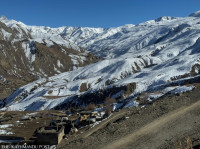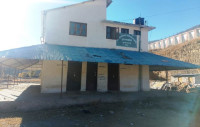Karnali Province
Experts to conduct census of the Demoiselle cranes
As part of their migration pattern, the cranes have entered India from Mustang-Bheri River route, ornithologists say..jpg&w=900&height=601)
Harihar Singh Rathour
Swoops of Demoiselle crane (Grus virgo), commonly known as Karyankurung in Nepal, fly in from Siberia over the Tibetan highlands in China to the Himalayas in India every year looking for a warmer climate.
The area’s tough climatic conditions usually hinder these cranes’ journey, forcing them to layover in Upper Mustang, Kaligandaki and Bheri Corridor on their way to Rajasthan and Gujarat in India.
To make use of this annual occurrence, a group of ornithologists—including Mitra Pandey and Hirulal Dangaura—have been staying in Upper Mustang (from September 29) to conduct the census of the species. The team is stationed in the region for a month.
According to the Bird Conservation Nepal (BCN), the global population of this species is around 230,000 to 261,000. On October 7, six groups of Demoiselle crane entered India from the Mustang-Bheri River corridor route. Krishna Bhusal, director at the BCN, said that cranes migrated from Kaligandaki corridor due to bad weather this year.
According to the study, the cranes reach Mustang at around noon (12:00 pm) if they start their journey early in the morning from Tibet.
The BCN has been studying Demoiselle crane from the last five years. “Usually crane raises its chicks during monsoon and enters India to avoid the extreme cold during winter,” said Bhusal, adding that they return to their own habitat (Mongolia and Russia) to hatch eggs.
Wetlands are the habitat of the Demoiselle cranes. According to the four-year study of the BCN (which was conducted in Mustang), around 20,000 cranes enter Nepal from Kaligandaki corridor every year. Ornithologists said that these birds can fly at around 7,900 meters of height. The National Parks and Wildlife Conservation Act has kept Demoiselle cranes under the list of protected species.




 18.12°C Kathmandu
18.12°C Kathmandu-(2).jpg)











